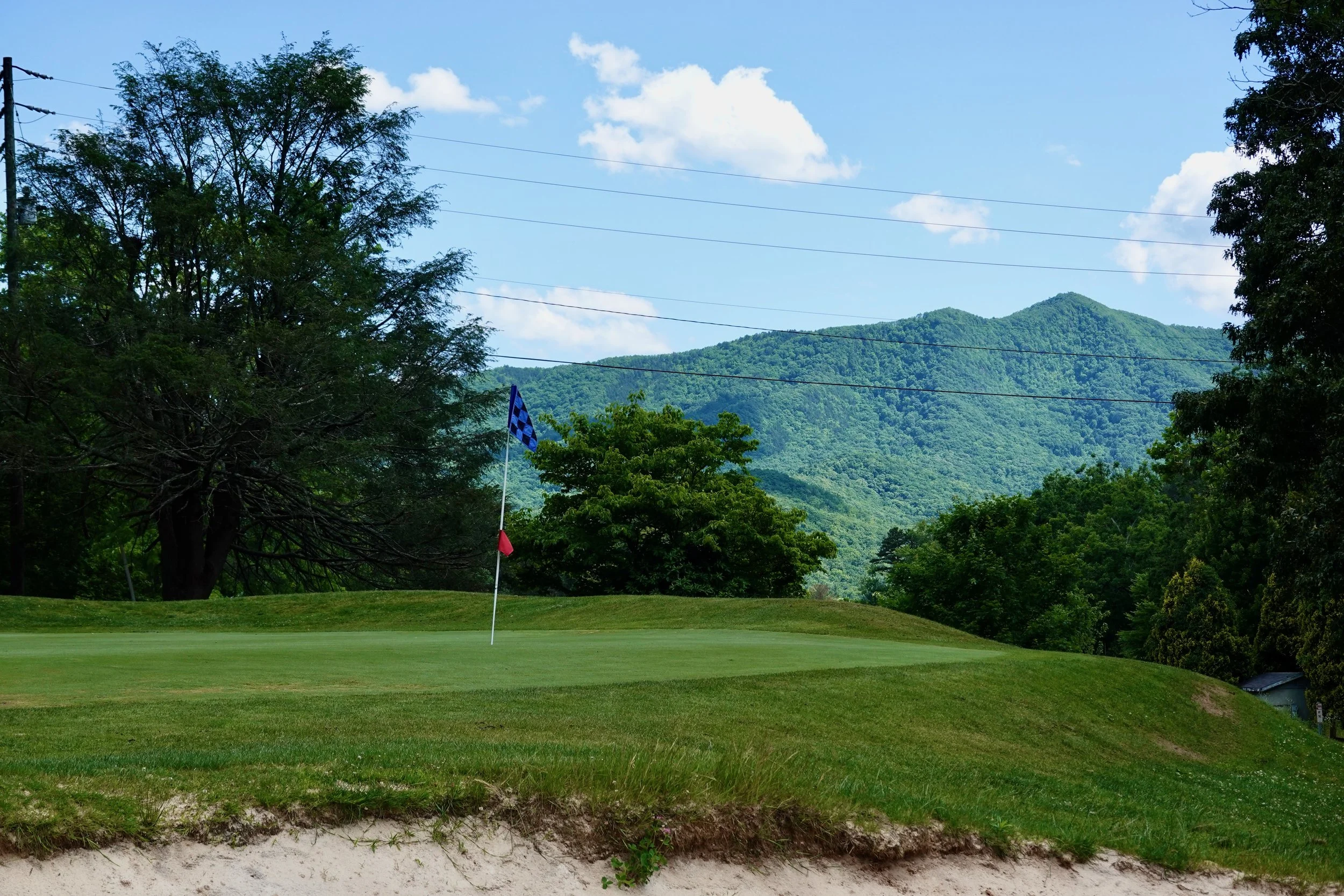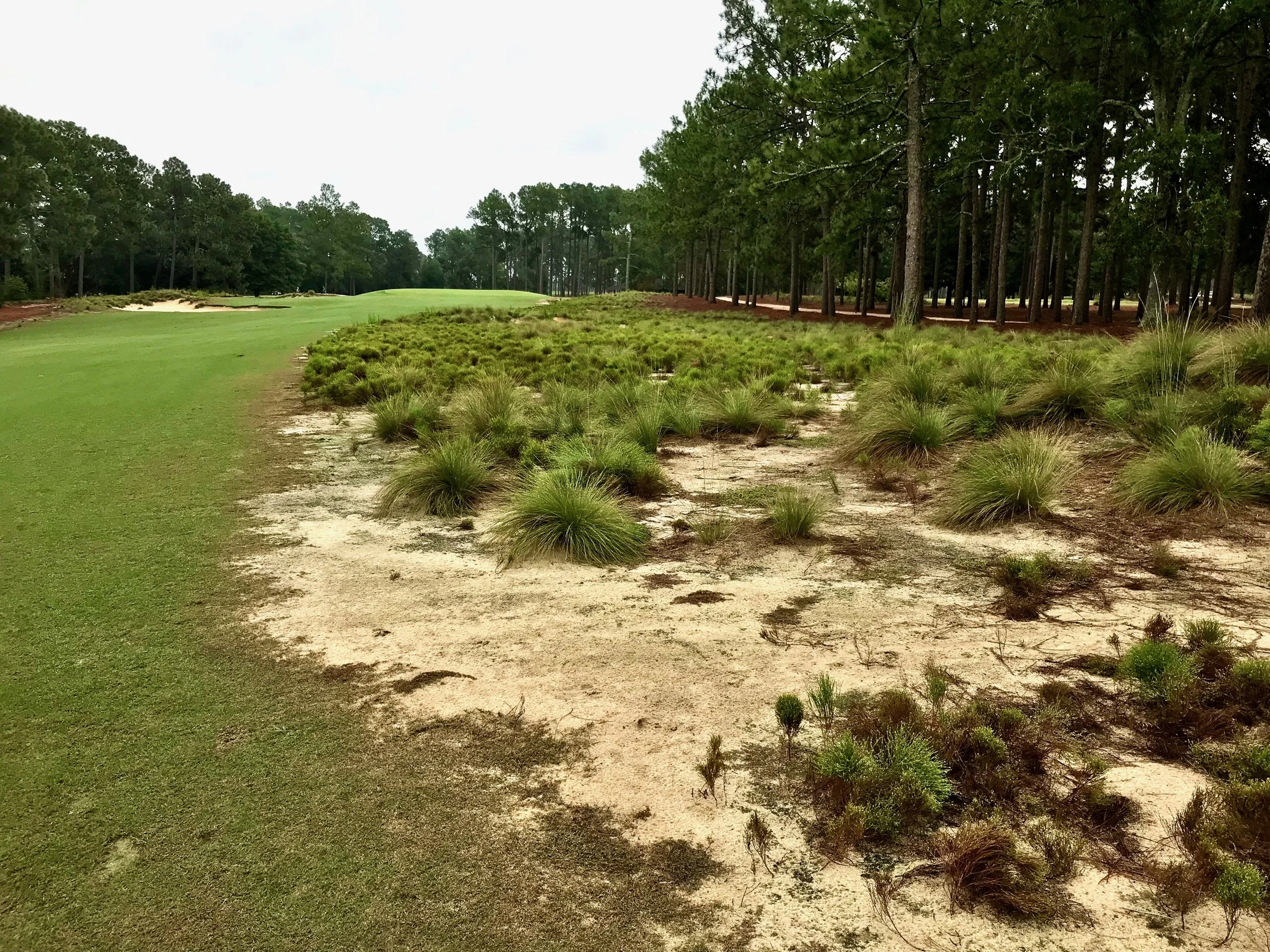Places
Tales — not reviews — from the search for
the Deep South’s hidden gems, at around 50 bucks per round.
Sprinting through Donald Ross’ nine-hole design just east of Asheville, N.C., and mid-round reflections on midlife juggling.
Langston Golf Course in Washington, D.C., serves a community with experience being ignored then heard. Its new nonprofit operator wants to change that.
The Robert Trent Jones Golf Trail’s short par-3 course is an important step forward from its monolithic collection of regulation-length designs, but it falls short of divorcing itself entirely from some of the Trail’s more mundane qualities.
Deciding No. 10’s designer was a moment that cried out for boldness. Instead, Pinehurst blinked.
A California bill to support repurposing municipal golf courses has been miscast as a threat. In truth, it is an opportunity, if the golfing world will take it.
When it opened in 2000, architect Mike Strantz described Tot Hill Farm as “worlds apart” from his design at Tobacco Road. He was right. That’s its problem.
Even among the North Carolina Sandhills’ embarrassment of riches, Asheville Municipal’s Donald Ross design is a fun time at a preposterous value.
At first glance, LaFortune Golf Course in Tulsa appears fairly nondescript. But it quickly reveals that it learned a few tricks from its neighbor, Southern Hills.
The geological period from which Cambrian Ridge takes its name was a time of dramatic change and evolution. Cambrian Ridge almost shows some of the same. Almost.
In the shadow of larger golf courses with unlimited budgets, Bent Brook is an average course facing an above-average challenge.
Cider Ridge Golf Course in Oxford, Alabama, is more a forgery of a golf course than a real one: penal and poorly thought out, routed from the scraps of land left over from a surrounding housing development.
Overlooking the Gulf of Mexico on “the unluckiest island in America,” Isle Dauphine might have more potential than any golf course in the United States.
On the Mississippi Gulf Coast, an improbable round after a long layoff offered a reminder that golf, like life, never withholds second chances.
In an era of austerity, a golf course tucked in a north Mississippi state park does more with less to remain one of the state’s best public designs.
Geography, pedigree, and happenstance have positioned a Chattanooga muni to emerge as a star in an area that is already an embarrassment of public golf riches.
For a golf course in south central Tennessee and designed by one of the world’s most famous architects, comparisons between Sewanee and nearby Sweetens Cove are inevitable.
The Refuge in Flowood, Miss., reopened in 2021 after a four-year renovation. In hindsight, though, the renovation appears to have been less about the golf course and more about decorating the new hotel next door.
On the one hand, Contraband Bayou is a golf course named Contraband Bayou. On the other hand, there is no other hand.
Wolf Hollow Golf Course, on the campus of a community college in southwest Mississippi, is a true diamond in the rough: a shot-making joyride, all for a preposterously low greens fee.
Tom Doak’s renovated design at Memorial Park in Houston strikes the balance between a high-profile, PGA Tour-worthy venue and a lovable municipal course that’s accessible to its community.
Webb Memorial is nearly 100 years old, but this Baton Rouge municipal golf course still delivers something that isn’t going out of style: affordable, quirky golf in an urban setting.
I take lessons. I read hornbooks. I think I’m better than I was 10 years ago — a better lawyer, a better golfer, a better man. But I’m not certain. And the numbers don’t look good.
The 6,300 yards that Tillinghast baked into Swope undoubtedly play shorter today than they did when the course opened nearly 90 years ago. But its bizarre yardages create awkward yardages that still challenge, even in the Twenty-First Century.
Few institutions deliver disappointment as consistently as baseball and golf. And yet season after season, and round after round, we keep coming back. The reason, I think, is hope.
The course is not perfect. It’s not even a perfect representation of what its masterminds were trying to achieve. But Bobby Jones is miles closer to what urban public golf must look like 20 years from now to stay relevant.
Whether Pebble Beach is America’s “best” public-access golf course is debatable. But it’s unquestionably one of the worst examples of public-access golf in America.
Northeast Birmingham feels like a place that’s been forgotten. Maybe a beloved, resurgent municipal golf course can help people remember.
In my southwest Mississippi hometown, a once-heralded Arthur Hills design is far from the vision it promised a generation ago — but is still worth saving.
No-touch flagsticks and single-rider carts mitigate the risk of coronavirus transmission on a golf course. But hotels, restaurants, shops, and other gathering spots make golf resorts a much more complicated setting.
Lying Four - Places map































